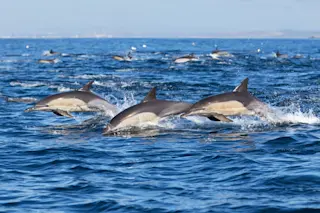Dolphins are known by many for their playful nature and remarkable intelligence. But experts say they have far more in common with humans than meets the eye — like the fact that they’ve been known to form highly advanced social dynamics, building friendships and relationships much like we do.
Dolphins typically live in groups called pods, which can consist of as few as two dolphins or as many as 1,000 dolphins in a “super-pod”. Most pods include somewhere between 40 and 60 dolphins, and this group dynamic gives dolphins a major advantage in hunting prey and hiding from predators.
Within these pods, dolphins do more than just mate. Often, they develop complex social relationships with each other. They’re also known to have unique individual personalities, just like humans. And the social dynamics and distinctive culture that exists within a pod can have major impacts on how dolphins in that pod ...














